

How to Attract Beneficial Insects for Pest Control in Gardens
Introduction
In a world dominated by chemical pesticides, beneficial insects emerge as the unsung heroes of our gardens. Picture this: ladybugs flying in for a snack on pesky aphids, lacewings swooping down to feast on soft-bodied insects, and hoverflies buzzing around, pollinating flowers while hunting pests. These tiny warriors not only help control pest populations but also contribute to pollination, enriching the overall health of your garden. If you’re tired of chemical solutions and want a more sustainable approach, attracting beneficial insects is your golden ticket.
So, how do you roll out the welcome mat for these garden allies? First, understand that they thrive in diverse environments. You’ll want to create a habitat that offers food, shelter, and water—much like a five-star resort for bugs. Start by planting a variety of flowers that bloom throughout the growing season. This ensures a steady supply of nectar and pollen, which these insects rely on for energy.
Next, consider the plants you choose. Native plants are particularly effective, as they have co-evolved with local insects. They provide just the right conditions for beneficial insects to flourish. Plus, incorporating plants like yarrow, dill, and marigold can attract a mix of ladybugs, lacewings, and parasitic wasps—all essential for keeping pest numbers in check. For more information on native plants, check out the Best native plants for attracting local wildlife.
When you’re planning your beneficial insect haven, consider adding a Ladybug Habitat Kit. This delightful addition not only provides a cozy home for ladybugs but also encourages them to stay and feast on those pesky aphids. Trust me, they’ll appreciate the gesture!
Using native plants in your garden can greatly enhance your efforts to attract beneficial insects. Best native plants for attracting local wildlife
Water sources are another crucial aspect. Beneficial insects need hydration just like any other creature. Shallow dishes filled with pebbles can provide safe drinking spots without drowning hazards. Regularly changing the water will keep it fresh for your insect guests. For a more attractive watering solution, consider a Garden Watering Dish with Pebbles. It’s a stylish way to quench their thirst while adding a decorative touch to your garden!
Finally, be patient! Establishing a thriving ecosystem takes time. Resist the urge to reach for those chemical sprays, as they often wipe out both pests and their predators. Instead, let nature do its thing. With a little time and care, your garden can become a bustling hub of beneficial insects, all working together to maintain balance and harmony. Say goodbye to harmful pesticides and embrace the captivating world of beneficial insects in your garden!
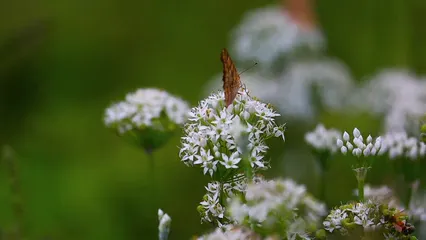
Summary
Attracting beneficial insects to your garden is not just an eco-friendly pest control method; it’s a delightful way to boost biodiversity. This article will cover the various types of beneficial insects, their roles in pest control, and how to create an inviting habitat for them. From selecting the right flowering plants to providing essential water sources, we’ll discuss effective strategies that ensure these insects thrive in your outdoor space.
By planting a diverse array of flowers that bloom from early spring through late fall, you’ll create a continuous food source. Consider herbs like fennel and dill, which are particularly attractive to beneficials. Adding shelter, such as piles of leaves or logs, will offer hiding spots for insects to escape predators. Furthermore, you’ll learn how to maintain a chemical-free environment to protect these valuable allies.
To keep your beneficial insect population thriving, consider investing in a Garden Log Cabin Insect Hotel. This charming abode provides shelter for a variety of beneficial insects, giving them a safe place to rest and breed. Think of it as a holiday resort for your insect friends!
By the end of this guide, you’ll understand the myriad benefits these garden allies offer and have actionable steps to invite them into your outdoor sanctuary. Get ready to say goodbye to chemical pesticides and hello to a vibrant, self-sustaining garden ecosystem! Your plants will thank you, and so will the planet.
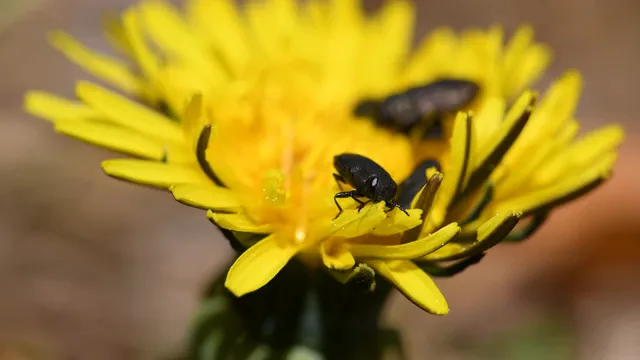
Understanding Beneficial Insects
What Are Beneficial Insects?
Beneficial insects are nature’s pest control agents. They help keep harmful pest populations in check and promote a balanced ecosystem. These little critters play vital roles in gardens, ensuring plants thrive without the need for chemical interventions. They come in two main categories: predators and parasitoids.
Predators actively hunt and consume pests. Think of ladybugs, lacewings, and ground beetles. These insects feast on soft-bodied pests like aphids and caterpillars, effectively reducing their numbers. On the other hand, parasitoids lay their eggs inside or on the bodies of host insects. As their larvae develop, they feed on the host, ultimately leading to its demise. Parasitic wasps are prime examples of this group. Both types of beneficial insects are essential for maintaining a healthy garden environment.
Common Beneficial Insects
Ladybugs
Ladybugs, or ladybird beetles, are among the most recognized beneficial insects. With their vibrant red shells and black spots, they are a delightful sight in any garden. These beetles are voracious eaters, consuming up to 50 aphids daily. As adults, they lay their eggs near aphid colonies, ensuring a steady supply of food for their larvae. The larvae are equally impressive, capable of devouring around 400 aphids before transforming into adults. Planting flowers like dill, yarrow, and marigold will attract these charming little helpers.
For those looking to give ladybugs a helping hand, consider purchasing Lacewing Eggs for Garden Pest Control. These little eggs will hatch into hungry larvae that love to munch on aphids, making them the perfect partner for your ladybug army!
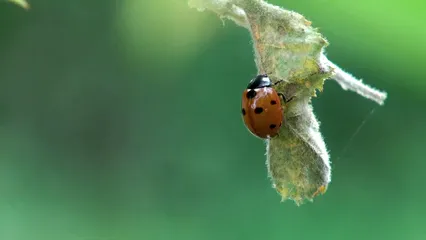
Hoverflies
Hoverflies, often mistaken for wasps, are essential players in the garden. These small, non-stinging flies are excellent pollinators. Their larvae, however, are the real pest control heroes. They feast on aphids, thereby reducing their populations significantly. Hoverflies are drawn to flowering plants such as dill, cosmos, and marigold. Their lifecycle starts with adults laying eggs near aphid colonies, ensuring that the larvae have plenty of food when they hatch.
To make your garden even more appealing to hoverflies, consider planting Hoverfly Attractant Plant Seeds. These seeds will help create a buffet for hoverflies, enticing them to your garden and ensuring a healthy balance of pest control!
Lacewings
Lacewings are known for their stunning, delicate wings that resemble lace. Their larvae, often referred to as “aphid lions,” are fierce predators. They can consume large numbers of aphids, caterpillars, and insect eggs. Lacewings thrive in diverse habitats where they can find food and shelter. To attract them, consider planting flowers like dandelion, cosmos, and fennel. These plants provide nectar for adult lacewings while offering a habitat for their larvae.
Parasitic Wasps
Parasitic wasps might not be as visually appealing, but their impact on pest control is significant. These tiny wasps target various pests, including caterpillars and aphids. They lay their eggs inside or on the host insect, and as their larvae develop, they consume the host from within. While this may sound gruesome, it’s a natural method for keeping pest populations under control. Planting flowers such as dill, marigold, and cosmos can attract these beneficial wasps, providing them with the resources they need to thrive.
For organic pest control, you might want to keep Parasitic Wasps for Organic Pest Control on hand. These beneficial insects will help keep your garden balanced while you enjoy the beauty of your flourishing plants.
In summary, beneficial insects are the unsung heroes of pest control in gardens. Understanding their roles and how to attract them can lead to a lush, thriving garden ecosystem. By inviting ladybugs, hoverflies, lacewings, and parasitic wasps into your space, you’re not only protecting your plants but also enhancing biodiversity in your garden.

Creating a Beneficial Insect Habitat
Shelter and Water Sources
Creating a welcoming environment is key to attracting beneficial insects. Start by offering shelter. Think of your garden as a cozy hotel for these little helpers. You can create hiding places with logs, leaf piles, or even small rock formations. These spots provide refuge from predators and harsh weather. Having a mix of materials helps cater to various insect preferences.
Also, don’t forget the importance of water! Beneficial insects need hydration just like we do. Shallow dishes filled with pebbles are perfect. They allow insects to drink without the risk of drowning. For a more natural option, shallow ponds can work wonders too. Just make sure you keep the water fresh by changing it regularly. After all, no one likes stale water!
Speaking of water sources, consider adding a Shallow Garden Pond Kit to your landscape. It’ll not only provide hydration for beneficial insects but also create a serene spot for you to enjoy the beauty of nature!
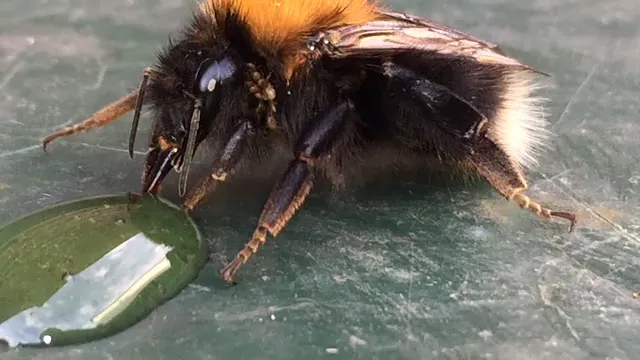
Chemical-Free Environment
Now, let’s chat about the not-so-friendly chemicals lurking in your garden. Pesticides can be harmful to beneficial insects, wiping out entire populations along with the pests. These tiny allies are often more sensitive to chemicals than the pests they help control. It’s essential to choose your pest control methods wisely.
Instead of reaching for chemical sprays, consider alternatives. Insecticidal soaps and horticultural oils are great options. They target pests while being gentler on beneficials. Neem oil is another excellent choice, disrupting the life cycles of pests without harming your insect friends. You can find quality options like Organic Neem Oil Spray readily available online!
Incorporating these simple yet effective strategies will help your garden flourish with beneficial insects. By providing shelter, water, and a chemical-free space, you’ll create a thriving habitat. Remember, a little patience goes a long way. With time, your garden will be buzzing with life, and those beneficial insects will repay your kindness by keeping pesky pests in check!
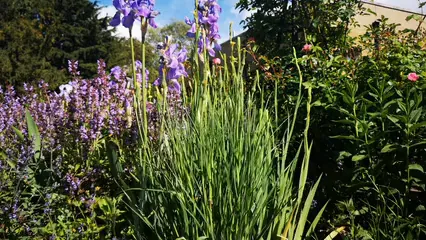
Maintenance Tips
Delaying Garden Clean-Up in Fall
When fall rolls in, we often feel the urge to tidy up our gardens. However, holding off on that clean-up can be a game changer for beneficial insects. Leaving behind old plant stems and debris can provide crucial winter shelter for these helpful critters. Many beneficial insects, like ladybugs and lacewings, overwinter in these cozy nooks. So, instead of clearing away all that “mess,” consider it a protective blanket for your garden’s tiny allies. Plus, who needs an immaculate garden when you can have a thriving ecosystem? Nature knows how to take care of itself, after all!
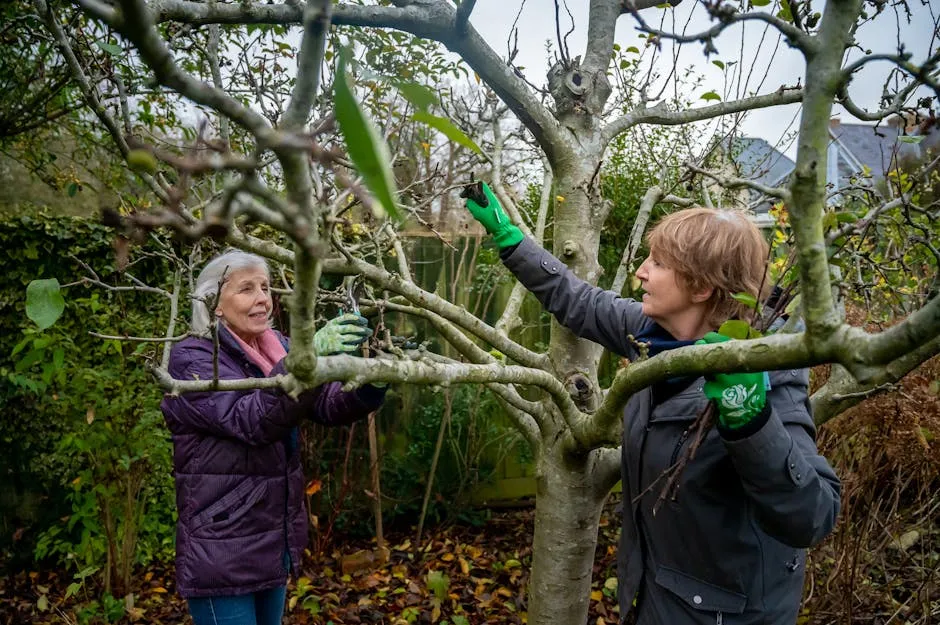
Avoiding Monocultures: Importance of Diversity in Plant Types
Now, let’s talk about diversity. Planting a single type of plant, known as a monoculture, may seem like a straightforward strategy. However, this can lead to a pest buffet, inviting unwanted guests to your garden party. Instead, mix it up! Incorporate a variety of plants to create a vibrant, multi-layered habitat. This diversity supports a wider range of beneficial insects by providing them with the food and shelter they need. For instance, pairing flowering herbs with vegetables not only beautifies your garden but also attracts pollinators and pest predators. So, channel your inner DJ and create a symphony of plants that attracts beneficial insects while keeping pests at bay!
For those keen on maximizing their gardening efforts, consider a pair of Organic Gardening Gloves. They’ll keep your hands safe while you dig into the dirt and create that diverse plant paradise!

Conclusion
Attracting beneficial insects to your garden is a rewarding endeavor that offers numerous ecological benefits. By implementing the strategies outlined in this guide—selecting the right plants, creating habitats, and maintaining a chemical-free environment—you can foster a thriving ecosystem that naturally manages pests. Embrace the beauty of nature’s allies and watch as your garden flourishes with life!
You don’t have to be a master gardener to invite these helpful insects into your space. Start small! Delay that fall clean-up and let a few weeds become your new best friends. Plant a diverse mix of flora, ensuring there’s always something blooming from early spring to late fall.
To help keep track of your gardening journey, consider using a Garden Planner Journal. It’ll help you track your planting schedules and monitor the beneficial insects that come to visit!

Remember, the journey to an insect-friendly garden takes time and patience. Beneficial insects need a welcoming environment to establish themselves. As you nurture this tiny ecosystem, you’ll find that your plants are healthier, pest populations are manageable, and your garden becomes a lively hub of activity.
So, roll up your sleeves, get your hands dirty, and enjoy the delightful process of creating a garden that thrives naturally. When you invite beneficial insects into your garden, you’re not just managing pests—you’re cultivating a vibrant and sustainable environment that benefits everyone, including you. Let nature do its thing, and watch your garden transform into a flourishing haven!
FAQs
What are the best plants to attract beneficial insects?
To attract beneficial insects, consider planting a variety of species that provide nectar and pollen. Key plants include: Yarrow: This perennial not only attracts ladybugs but also offers a rich nectar source for various pollinators. Dill: A favorite among hoverflies and parasitic wasps, dill blooms throughout the season, ensuring a steady food supply. Marigold: These bright flowers are excellent for attracting beneficial insects while repelling some pests. Cosmos: With their vibrant blooms, cosmos are a magnet for pollinators and provide food for beneficials. Fennel: This aromatic herb attracts a wide range of beneficial insects, including lacewings and hoverflies. By planting these and other diverse options, you’ll create a welcoming habitat that encourages beneficial insects to thrive in your garden!
How do I create a water source for beneficial insects?
Creating a water source for beneficial insects is crucial. Think of it as a refreshing oasis! You don’t need to break the bank or dig a massive pond. Here are simple ideas to set up shallow water sources that will make your garden a hit with these tiny allies. Use shallow dishes or saucers filled with pebbles. Fill the dish with water, ensuring the pebbles stick out above the surface. This way, insects can land safely without the risk of drowning. You can also use ceramic pots or even old Frisbees! Just make sure they’re shallow enough. Another option is to create a tiny pond using an upturned wheelbarrow or a large basin. Add some stones or submerged plants for added flair and habitat. A few small water plants can provide a natural touch while offering insects a place to perch. Remember to refresh the water regularly. Stagnant water can attract unwanted pests like mosquitoes, and we want to keep the focus on beneficials! Changing the water every few days will keep it clean and inviting. Position your water sources in shaded areas to prevent evaporation. This way, beneficial insects can stay hydrated while staying cool. With these simple setups, you’ll have a bustling water source that helps support your garden’s beneficial insect population.
Are there any pests that beneficial insects cannot control?
While beneficial insects are nature’s tiny warriors, they do have limitations. Not every pest is a cakewalk for these critters. Some pests, like certain caterpillars and root maggots, can be particularly challenging. Beneficial insects often struggle to keep these populations in check. Monitoring your pest populations is essential. Keep an eye out for outbreaks that could overwhelm your beneficials. If you notice a spike in pests, it might be time to step in with additional measures. Remember, a few pests can be a good thing! They provide food for your beneficial insects. If you find that some pests are getting out of hand, consider using organic pest control methods as a backup. Insecticidal soaps or neem oil can help reduce pest numbers without harming your beneficial allies. Just remember, always apply these treatments selectively to minimize impact on the good guys. In summary, while beneficial insects are amazing, they can’t do it all. Stay vigilant and be prepared to act if pest populations grow too large for your tiny helpers to handle.
Can I introduce beneficial insects from outside sources?
Introducing beneficial insects from outside sources can be tempting. After all, who wouldn’t want a squad of ladybugs on speed dial? But before you rush to the store, consider the pros and cons of purchasing versus encouraging native species. Buying beneficial insects can give you a quick boost. You can target specific pests and potentially see immediate results. However, these purchased bugs may not always adapt well to your environment. They might fly away or even struggle to find food. On the flip side, fostering native species offers a more sustainable approach. Native beneficials are already adapted to your local climate and ecosystems. They know where to find food and shelter, making them more likely to thrive long-term. By creating a welcoming habitat, you can encourage these local critters to set up shop. So, which route to take? If you choose to buy, do so selectively and from reputable sources. However, for lasting success, focus on attracting and nurturing your garden’s native beneficial insects. They’ll be your loyal allies for years to come!
How long does it take for beneficial insects to establish in my garden?
Patience is the name of the game when it comes to establishing beneficial insects. It doesn’t happen overnight, but with the right conditions, you can expect to see some results within a few weeks. Initially, you may notice a few newcomers buzzing about. However, building a robust population takes time. Typically, it can take several months to a year for beneficial insects to establish a steady presence in your garden. The more diverse your plants and resources, the faster they will come. Creating a welcoming habitat is the key. Providing food, water, and shelter will entice them to stick around. Over time, as your garden flourishes, you’ll likely see more of these helpers arriving. So, don’t fret if you don’t see immediate results! With consistent effort and a little patience, your garden will become a thriving ecosystem of beneficial insects working hard to keep pests at bay.
What should I do if I still have pest problems after attracting beneficials?
If pests persist even after attracting beneficial insects, don’t panic! There are several strategies you can employ to integrate other organic pest control methods. First, conduct a thorough inspection of your garden. Identify which pests are causing the most trouble. This will help you target your approach effectively. If certain pests are overwhelming your beneficials, consider using organic solutions like insecticidal soap or neem oil. These options are less harmful to beneficial insects while still being effective against many pests. Another option is to introduce trap plants. These are plants that attract pests away from your main crops. For instance, nasturtiums can entice aphids, keeping them off your prized vegetables. Lastly, consider practicing crop rotation and interplanting. This can disrupt pest life cycles and reduce infestations. Regularly changing the location of your plants will help confuse pests and make your garden less appealing to them. In summary, if pests remain a challenge, don’t hesitate to take action. With a combination of organic methods and smart gardening practices, you can create a balanced environment where both beneficial insects and your plants thrive!
Please let us know what you think about our content by leaving a comment down below!
Thank you for reading till here 🙂
All images from Pexels



